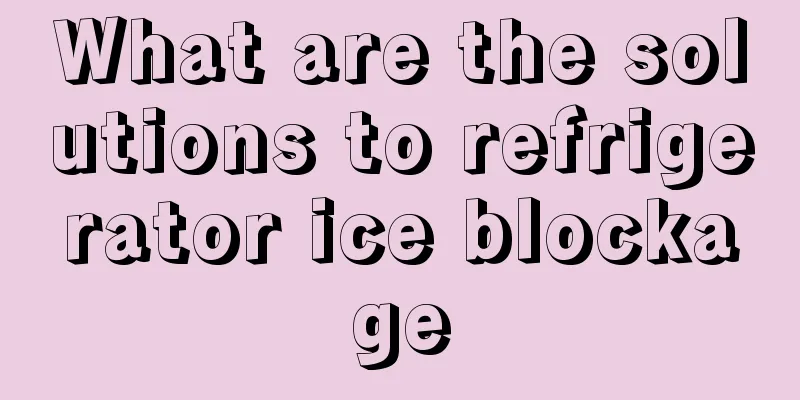Optic nerve contusion

|
When it comes to optic nerve contusion, I believe many people are not clear about what kind of disease it is. In fact, optic nerve contusion is one of the most common complications of road and brain trauma. Generally speaking, among 100 patients with road and brain trauma, 2 to 5 patients suffer from optic nerve contusion. So what is the cause of optic nerve contusion? How to treat optic nerve contusion? In fact, there are many causes of optic nerve contusion, mainly including traffic accidents, blow injuries, etc. Generally speaking, symptoms such as blurred vision and visual impairment will appear. Below is a detailed introduction to the treatment of optic nerve contusion. Optic nerve contusion Optic nerve injury is called traumatic optic neuropathy, which is one of the common and serious complications of craniocerebral injury, accounting for about 2% to 5% of craniocerebral trauma. Causes According to the cause of injury, it can be divided into traffic accident injury, fall injury and blow injury, among which traffic accident injury is the most common. Due to its anatomical structure and physiological characteristics, more than 90% of optic nerve injuries are indirect injuries to the optic nerve canal segment. Direct injury to the optic nerve caused by a sharp object and direct injury to other parts of the optic nerve are relatively rare in clinical practice. Indirect optic nerve injury refers to the impact on the outer side of the orbit, generally the upper temporal part of the eyebrow arch. The external force is transmitted to the optic canal through the skull, causing deformation or fracture of the optic canal, resulting in optic nerve damage and resulting in vision and visual field impairment. 1. Liver Qi is stagnant and Xuanfu is blocked. The liver is injured by anger, which causes Qi stagnation. The essence of the internal organs goes up to the eyes, relying on the liver's function of dispersing qi. If liver qi is stagnant and the meridians are blocked, the essence cannot go up to nourish the eyes, and the eyes lose nourishment, resulting in amblyopia. 2. Deficiency of liver and kidney yin, insufficient clear blood. The liver stores blood, and the eyes get blood to see; the kidney stores essence, and when the essence and blood are abundant, the eyes can see everything. The liver belongs to wood, the kidney belongs to water, and water can produce wood, so Yi and Gui have the same origin. If a person is physically weak or has excessive sexual intercourse, it may lead to liver and kidney yin deficiency and insufficient clear blood, which may cause the divine light to lose its roots and the eyes to be unable to see. 3. Deficiency of both Qi and blood, and lack of nourishment to the eyes are often seen in serious illness that has consumed essence and blood for a long time, or trauma to Qi and blood, or trauma after surgery that has not yet recovered, resulting in deficiency of both Qi and blood, lack of nourishment to the eyes, and causing amblyopia. 4. Insufficient kidney yang leads to the decline of divine light. Divine light is the essence of natural vision in the eyes. It originates from the gate of life, passes through the gallbladder, and originates from the heart. If due to a weak constitution, yang deficiency, or a long-term illness, the kidney yang is damaged, the true fire of the kidney's life gate will be weakened and unable to warm the internal organs, resulting in the decline of the spiritual light and blindness. diagnosis Post-traumatic visual acuity loss, visual field loss, and abnormal afferent pupillary light reflex are the main clinical basis for diagnosing optic nerve injury. Comprehensive diagnostic criteria: ① History of head trauma; ② Visual impairment; ③ Dilated pupil on the injured side, absent direct light reaction, and present indirect light reaction; ④ Normal fundus examination in the early stage, but optic nerve atrophy in the late stage; ⑤ Visual field defects occur in those whose vision is not completely lost, and defects in the lower half of the visual field are most common; Dilated pupil on the affected side, slow or absent direct light reflex, and present indirect light reflex may be the only sign of optic nerve damage. During the examination, observe the pupil of the affected eye first, then the pupil of the healthy eye. Otherwise, if the observation time is too long, the two pupils may become the same size, which interferes with the diagnosis of optic nerve damage. The fundus may be normal in the early stage. For those who are unconscious, dilated pupil of the affected eye, absent or slow direct light reaction and normal indirect light reaction are typical signs of optic nerve damage, but they must be differentiated from brain herniation and oculomotor nerve injury. Patients with combined anterior skull base fracture, obvious congestion and edema of both eyelids or eye bandages are prone to neglect, and should be opened with an eyelid retractor for inspection when necessary. Treatment Once the disease is diagnosed, emergency treatment should be given immediately while treating the brain trauma. Treat optic nerve damage, relieve optic nerve compression, prevent and treat vasoconstriction and spasm after injury, and promote blood circulation and recovery of optic nerve conduction function. Because the main focus after craniocerebral trauma is to rescue the trauma and life, optic nerve damage may not be discovered or ignored, or even considered. Visual impairment is not discovered until the condition stabilizes. By then, several days, dozens of days or even longer have passed since the ophthalmology consultation, delaying the opportunity for potentially effective treatment. Some scholars believe that timely decompression of optic nerve injury (within 48 hours) is significantly better than late decompression (14 days). Surgical treatment: Indications and timing of surgery: There is no uniform standard for surgical treatment of optic nerve injury. Whether surgery is necessary depends on the patient's symptoms, degree of vision loss, vision requirements, whether there are other eye diseases, age, and the condition of the fellow eye. Surgery may be considered in the following situations: 1. Visual acuity is 0.1 or below, without permanent macular damage. 2. Visual acuity is above 0.4, but there are severe symptoms such as diplopia and visual distortion (patients who require better visual effects can try surgery by skilled operators). 3. The vision is good, but fluorescein angiography shows fluorescein leakage or macular edema. 4. Optic nerve damage after retinal detachment surgery should not be treated until it is stable and has no active contraction. Traditional Chinese Medicine Treatment: Traditional Chinese Medicine's "Clear Vision Therapy" has significant clinical effects on the treatment of patients with optic nerve damage. Because it incorporates the essence of thousands of years of Chinese medicine, starting from the etiology and pathogenesis of the disease, it regulates the internal organs, dredges the meridians, replenishes qi and blood, and performs dialectical treatment, so that patients can achieve the effect of "curing existing diseases" and achieve the goal of "preventing diseases before they occur". According to the physical characteristics and symptom differences of each patient, different acupoints and prescriptions are selected according to the individual and the syndrome, and different treatment plans are formulated. It mainly includes the following three processes: the first stage, the repair period (preliminary control of the epiretinal membrane of the eye, so that the patient's optic nerve damage symptoms are basically effectively controlled and gradually improve); the second stage, the recovery period (early recovery: eye ability is enhanced and clinical symptoms disappear. Mid-recovery: osmotic activation repair, producing key substances to repair damaged cells. Late recovery: slowly revitalize the damaged area and gradually restore health); the third stage, the consolidation period (through further consolidation treatment, the patient's clinical symptoms of optic nerve damage disappear completely, and the eye function returns to normal). After reading the answers to the above detailed introduction to the causes and treatments of optic nerve contusion, I believe everyone has a general understanding of this disease. The main treatment for optic nerve contusion is surgery, but it is not certain that full vision can be restored after surgery. It is usually accompanied by a certain degree of blurred vision. However, it must be treated in time, otherwise you will regret it and cause irreversible consequences. Everyone should pay attention. |
Recommend
Sugar ratio of homemade wine
After entering the 21st century, Chinese people a...
What are the symptoms of early vasculitis?
Many people do not know about the disease of earl...
My eyes are sore from wearing colored contact lenses
People nowadays love beauty very much and they pa...
Why do I have a lot of phlegm but no cough?
If you have excessive phlegm, you should pay atte...
Why does the left eyelid twitch?
Everything has its scientific basis. What we usua...
Electric water heater power
When many people choose electrical appliances, on...
What are the symptoms of prostate cancer
The symptoms of prostate cancer are generally not...
Men should pay attention to prostate cancer screening
Prostate cancer prefers the elderly, and the inci...
Can gout patients eat sea cucumbers?
The occurrence of gout brings great trouble to pa...
There are 5 factors that cause gum ulcers
Gingival ulcers are believed to be familiar to pe...
What is an easy way to cut mango?
Mango is a tropical fruit that is rich in various...
Treatment of central retinal vein occlusion
We all know that the myopia situation among teena...
What shampoo is best for dry hair? Top 5 categories
As the methods of hair care and hairdressing beco...
Not eating pickled food is also one of the ways to prevent colon cancer
If you experience these symptoms: repeated hemorr...
How to distinguish male and female arowana
Speaking of arowana, I believe many fish lovers l...









